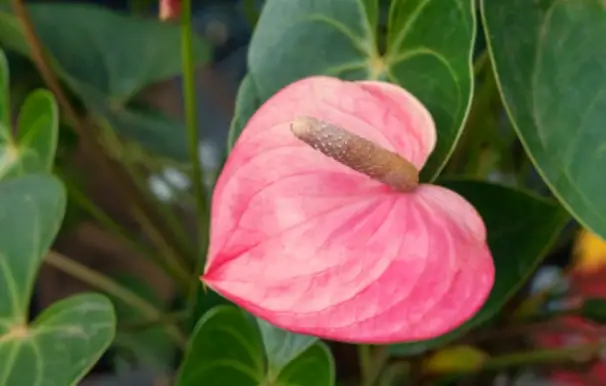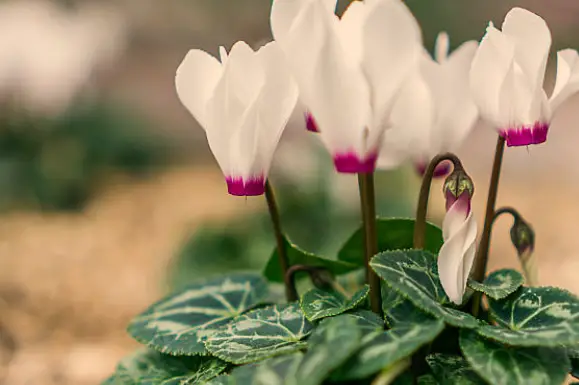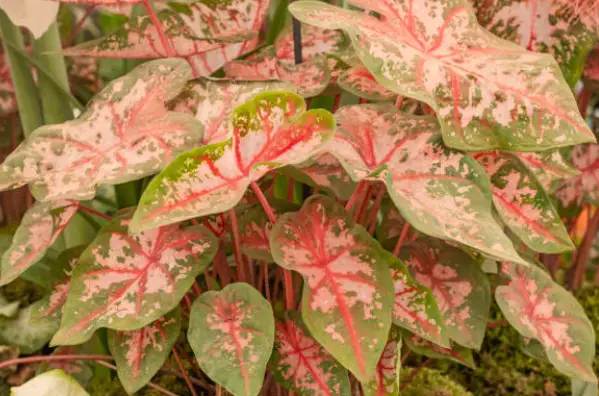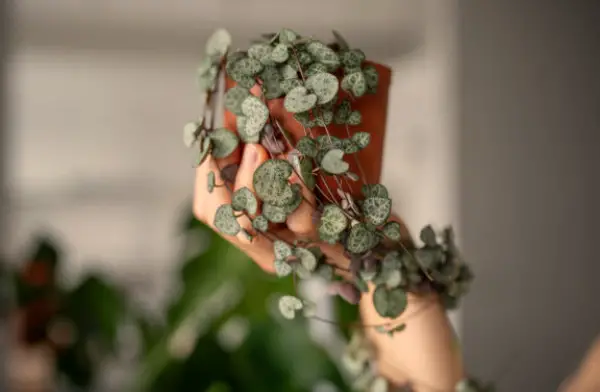Heart-shaped leaf plants are a great option if you are an indoor gardener or just want to add some natural elements to your home. These unusual and striking plants offer a variety of advantages, such as stress relaxation and air purification, in addition to adding a humorous touch to your interior design. In this extensive guide, we will delve into the world of heart-shaped leaf indoor plants, their maintenance needs, and the best options to take into account for your indoor haven.
Here are some key takeaways on heart-shaped leaf indoor plants:
Key Takeaways
• Heart-shaped leaves are not only visually appealing but also hold symbolic meaning representing love, compassion, and affection in many cultures.
• Growing heart-shaped leaf plants indoors provides benefits like air purification, stress relief, humidity regulation, and adding natural beauty to living spaces.
• Popular heart-shaped leaf houseplant varieties include Philodendrons, Anthuriums, Cyclamens, Caladiums, and Ceropegia woodii (String of Hearts).
• Care requirements include bright, indirect light, consistent watering, moderate to high humidity, well-draining soil, and occasional fertilization.
• Pruning, grooming, and repotting help maintain the plant’s attractive shape and promote new growth.
• Sources to acquire heart-shaped leaf indoor plants include local nurseries, online retailers, plant swaps and exchanges, and propagating from cuttings.
• Introducing these unique plants can create a thriving indoor oasis that boosts well-being while connecting you to the joys of nature.
• With their whimsical charm and relatively low maintenance, heart-shaped leaf houseplants make an excellent choice for both seasoned and beginner indoor gardeners.
The Charm of Heart-Shaped Leaves
Plant enthusiasts worldwide are captivated by the unique charm of leaves shaped like hearts. In addition to being aesthetically pleasing, these lovely plant shapes have significant meaning throughout numerous cultures. Heart-shaped leaves are said to symbolize love, compassion, and affection. They may infuse any area they are in with a feeling of coziness and optimism.
In addition to being aesthetically pleasing, leaves with a heart shape frequently have intriguing evolutionary and scientific histories. These unusual leaf forms are a defensive mechanism against herbivores, but other species have evolved them to maximize light absorption or conserve water. These intriguing leaf shapes, no matter where they come from, never fail to pique people’s interest and inspire admiration for the wonders of nature.
Benefits of Growing Heart-Shaped Leaf Plants Indoors
There are several advantages to adding heart-shaped leaf plants to your indoor space beyond just their aesthetic value. Here are some justifications for thinking about including these pretty plants in your collection of indoor plants:
1. Air Purification
Many indoor plants, including those with heart-shaped leaves, are natural air purifiers. They absorb harmful pollutants like formaldehyde, benzene, and trichloroethylene, which can be present in household products and building materials. By incorporating these plants into your living spaces, you can improve indoor air quality and create a healthier environment for you and your family.
2. Stress Relief
Caring for plants has been shown to have a calming effect on the mind and body. The act of nurturing and tending to your heart-shaped leaf plant can be a therapeutic and mindful experience, helping to reduce stress and anxiety levels. Additionally, the presence of greenery has been linked to improved mood and overall well-being.
3. Humidity Regulation
Some heart-shaped leaf plants, such as the popular Philodendron and Anthurium varieties, are excellent natural humidifiers. They release moisture into the air through a process called transpiration, which can help alleviate dryness and create a more comfortable indoor environment, especially during the colder months when heating systems can deplete indoor humidity levels.
4. Low Maintenance
Many heart-shaped leaf plants are relatively low-maintenance, making them ideal for busy individuals or those new to indoor gardening. With proper care and attention, these resilient plants can thrive in indoor conditions, providing you with their unique charm while requiring minimal effort on your part.
Popular Heart-Shaped Leaf Indoor Plants
Now that you understand the appeal and benefits of growing heart-shaped leaf plants indoors, let’s explore some of the most popular and beloved varieties:
1. Philodendron Varieties
The Philodendron genus is renowned for its heart-shaped leaves, with several species and cultivars being well-suited for indoor cultivation. The Philodendron scandens, commonly known as the Heart Leaf Philodendron, is a classic choice with its deep green, glossy heart-shaped leaves that can trail or climb depending on its growth habit.

Other noteworthy varieties include the Philodendron hederaceum (Heart Leaf Vine) and the Philodendron micans (Velvet Leaf Philodendron), which boasts velvety, heart-shaped leaves with a unique iridescent sheen.
2. Anthurium Varieties
Anthuriums are another genus celebrated for their distinctive heart-shaped leaves and vibrant, long-lasting flowers. The Anthurium crystallinum, also known as the Crystal Anthurium, is a popular choice with its dark green, velvety heart-shaped leaves adorned with crystalline-like structures.

The Anthurium andraeanum, or Flamingo Flower, is another stunner, featuring glossy, deep green heart-shaped leaves and vibrant red or pink spathes (modified leaves surrounding the actual flowers).
3. Cyclamen persicum
The Cyclamen persicum, or Persian Cyclamen, is a charming indoor plant that produces delicate, nodding flowers above a rosette of heart-shaped leaves.

Cyclamen persicum
These leaves are often patterned with intricate marbling or silvery-green veining, adding to the plant’s ornamental appeal. Cyclamen are perfect for adding a touch of whimsy to your indoor garden.
4. Caladium Varieties
Caladiums are prized for their stunning, heart-shaped leaves, which come in a dazzling array of colors and patterns.

While many Caladium varieties are grown as outdoor ornamentals, several species, such as Caladium bicolor and Caladium hortulanum, can be cultivated indoors as well. These plants add a vibrant, tropical flair to any indoor space.
5. Ceropegia woodii

For those seeking something truly unique, Ceropegia woodii, or String of Hearts, is an excellent choice. This trailing plant produces slender, heart-shaped leaves along its delicate vines, creating a captivating cascading effect in hanging baskets or elevated planters.
Caring for Heart-Shaped Leaf Indoor Plants
Heart-shaped leaf plants are available in a variety of sizes, forms, and colors, but they all require similar maintenance. Here are some general pointers to assist you in growing these beautiful indoor plants successfully:
Light Requirements
Most heart-shaped leaf plants thrive in bright, indirect light. Avoid placing them in direct sunlight, as this can scorch their delicate leaves. East- or west-facing windows are often ideal, or you can supplement natural light with grow lights if necessary.
Watering Needs
As with many indoor plants, heart-shaped leaf varieties prefer a consistent watering schedule. Allow the soil to partially dry out between waterings, and then water thoroughly until the excess moisture drains from the bottom of the pot. Avoid letting the soil become completely dry or waterlogged, as both extremes can be detrimental to the plant’s health.
Humidity and Temperature
Heart-shaped leaf plants generally prefer moderate to high humidity levels, ranging from 40% to 60% relative humidity. You can increase humidity around your plants by using a pebble tray, misting them regularly, or investing in a humidifier. Regarding temperature, most varieties thrive in the comfortable range of 65°F to 80°F (18°C to 27°C).
Soil and Potting
Well-draining, nutrient-rich potting mixes are essential for heart-shaped leaf plants. Look for mixes specifically formulated for indoor plants, or create your own blend using components like peat moss, perlite, and compost. Ensure the pot has adequate drainage holes to prevent waterlogging.
Fertilization
During the growing season (typically spring and summer), feed your heart-shaped leaf plants with a balanced, water-soluble fertilizer every four to six weeks. Follow the manufacturer’s instructions for dilution rates and application frequency.
Pruning and Grooming
Regularly removing dead or yellowing leaves and trimming back overgrown vines or stems can help maintain the plant’s attractive appearance and encourage new growth. Additionally, some heart-shaped leaf plants may benefit from periodic repotting to refresh the soil and provide more room for root expansion.
You may build a flourishing indoor sanctuary that enhances the natural beauty and happiness of your living spaces by adhering to the specific requirements of the heart-shaped leaf plant kinds you have chosen and by following these general maintenance suggestions.
Where to Find Heart-Shaped Leaf Indoor Plants
If you’re eager to add these captivating plants to your indoor garden, there are several options to explore:
Local Nurseries and Garden Centers
Heart-shaped leaf indoor plants can be found in excellent condition at your neighborhood garden centers and nurseries. Popular types like philodendrons, anthuriums, and caladiums are readily available at many outlets; you may choose healthy specimens and get professional guidance on how to care for them.
Online Plant Retailers
In the digital age, numerous online plant retailers offer a wide selection of heart-shaped indoor plants for convenient delivery to your doorstep. Reputable online nurseries often provide detailed plant descriptions, care instructions, and customer reviews to help you make informed decisions.
Plant Swaps and Exchanges
If you’re part of a local gardening community, plant swaps and exchanges can be a great way to acquire heart-shaped leaf plants from fellow enthusiasts. These events not only provide access to unique varieties but also foster a sense of community and knowledge-sharing among like-minded individuals.
Propagation from Cuttings or Divisions
Propagating new plants from cuttings or divisions can be a satisfying and economical way to increase the number of heart-shaped leaf plants in your collection if you already own one. Several types easily take root in water or damp potting soil, so you can start new plants right in your own house.
Embracing the Beauty of Heart-Shaped Leaf Indoor Plants
Indoor plants with heart-shaped leaves are a striking and unusual addition to any collection of indoor gardening plants. Beyond just being beautiful, these lovely plants have many other benefits, like their air-purifying qualities, symbolic meaning, and low maintenance needs.
Every heart-shaped leaf plant, whether you choose to grow trailing philodendrons, colorful anthuriums, or the whimsical String of Hearts, will add a unique charm and personality to your indoor haven. These plants may flourish indoors with the right maintenance, giving you a continuous source of happiness and a link to the outside world.
So, why not embrace the beauty of heart-shaped leaf indoor plants and let their enchanting foliage envelop your living spaces with warmth, tranquility, and a touch of nature’s magic? Start your journey today and discover the rewarding world of indoor gardening with these captivating plant companions.



